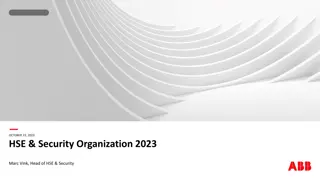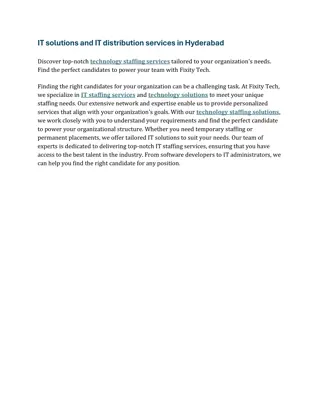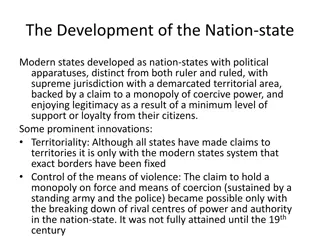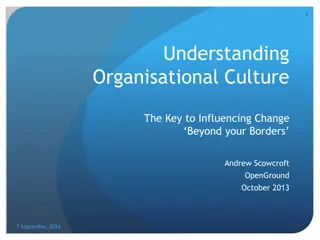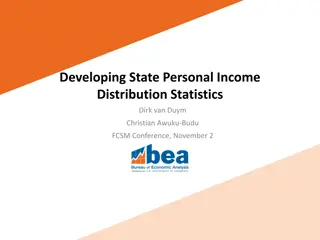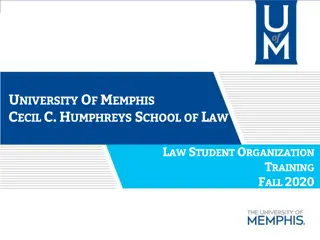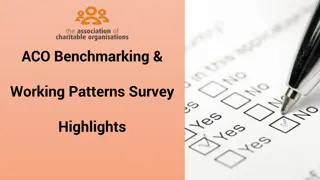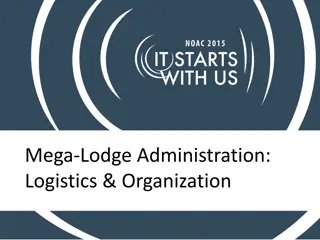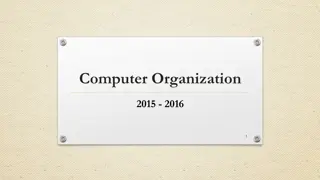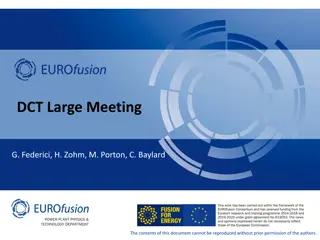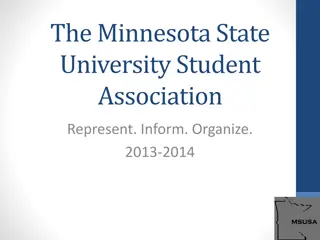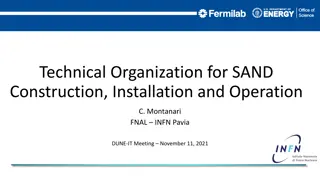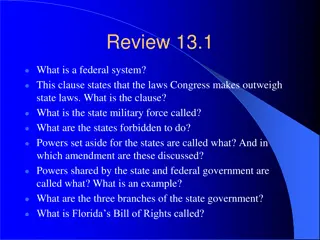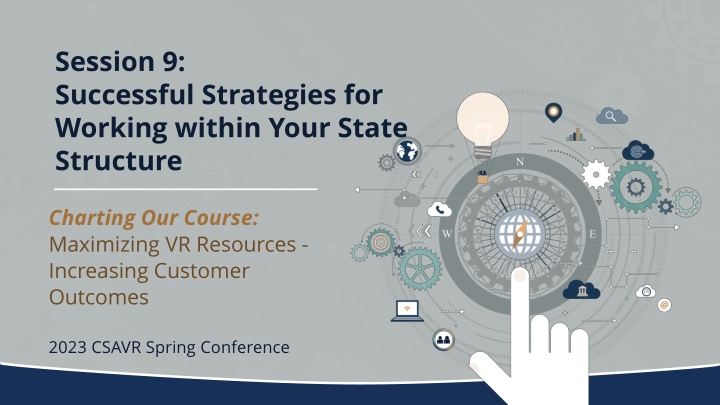
Strategies for Maximizing VR Resources and Increasing Customer Outcomes
Explore successful strategies for maximizing VR resources and enhancing customer outcomes within your state structure. Learn about the impact of WIOA, managing financial resources, building partnerships, and navigating the VR organizational landscape. Join industry experts to chart a course towards achieving vocational rehabilitation goals effectively.
Uploaded on | 1 Views
Download Presentation

Please find below an Image/Link to download the presentation.
The content on the website is provided AS IS for your information and personal use only. It may not be sold, licensed, or shared on other websites without obtaining consent from the author. If you encounter any issues during the download, it is possible that the publisher has removed the file from their server.
You are allowed to download the files provided on this website for personal or commercial use, subject to the condition that they are used lawfully. All files are the property of their respective owners.
The content on the website is provided AS IS for your information and personal use only. It may not be sold, licensed, or shared on other websites without obtaining consent from the author.
E N D
Presentation Transcript
Session 9: Successful Strategies for Working within Your State Structure Charting Our Course: Maximizing VR Resources - Increasing Customer Outcomes 2023 CSAVR Spring Conference
Disclaimer This content was developed by the VRTAC-QM, a project funded under #H264J200002; the VRTAC-QE, a project funded under #H264K200003; the NTACT:C, a project funded under #H326E200003, of the U.S. Department of Education (Department); and CSAVR, a member organization of State Vocational Rehabilitation Agencies. The information contained herein does not necessarily reflect the position or policies of the Department, and no official endorsement of any non- Federal product, service, or venture should be inferred.
Meet Your Presenters Session Facilitator Bill Robinson Michigan Bureau of Services for Blind Persons, Office of Employment and Training , Labor and Economic Opportunity Panel Cheryl Fuller Director, Vocational Rehabilitation Division, Texas Workforce Commission Greg Trapp Executive Director, New Mexico Commission for the Blind Nicky Harper Administrator, Wyoming Division of Vocational Rehabilitation, Department of Workforce Services
Key Takeaways VR Administration - A changing Director landscape WIOA and impact on VR Leadership Federal Statute influencing State organizational structure The Musts of the VR organizational unit Grant Administration Managing the Financial Resources available to you Building Partnerships Centralized/De-centralized Services Required Activities
Workforce Innovation and Opportunity Act (WIOA) Date of Enactment July 22, 2014 This session focuses on successful strategies for working within your unique state structure Turnover Complexity The onboarding of new administrators often does not include a manual or identification of all the state agencies and centralized services that must be navigated for successfully bringing resources to the table to address the host of moving parts to achieve the goals and objectives of vocational rehabilitation Since WIOA s enactment there has been approximately 90 new administrators of vocational agencies. Consider that today there are 78 VR agencies. The amount of turnover at the top is stunning.
Where did my organizational structure come from? Section 101(a)(2)(A) of the Rehab Act Section 101(a)(2)(A) of the Rehab Act and its implementing regulations at 34 CFR 361.13(a) require that the VR State Plan shall designate a state agency as the sole state agency to administer the plan. The state agency designated to administer the VR State Plan must be either: A state agency primarily concerned with VR, or VR and other rehabilitation, of individuals with disabilities; or A state agency that includes a VR Bureau, Division, or other organizational unit (Section 101(a)(2)(B) of the Rehab Act and 34 CFR 361.13(a)); or State commission or other agency that provides assistance or services to individuals who are blind
Organizational Unit Musts - Section 101(a)(2)(B)(ii) and 34 CFR 361.13(b) requirements The VR Bureau, Division, or VR organizational unit must: Be primarily concerned with VR, or VR and other rehabilitation, of individuals with disabilities, and be responsible for the VR program of the Designated State Agency (DSA); Be administered by a full-time director; Employ staff on the rehabilitation work of the organizational unit all or substantially all (90%) of whom devote their full time to such work; and Be located at an organizational level & have an organizational status within the DSA comparable to that of other major organizational units of the DSA
Director as Grant Administrator Grant Award Notification (GAN) Tell us how you, as VR Agency Director, communicate the awards to the interested parties in your state. Governor, State Legislators, Other stakeholders What are the key points from the GAN shared with others Required match, Prior Approval, BABAA, Stevens Amendment, etc.
Relationships and Relationship Building within the State Structure Financial Personnel How you interact with those financial management resources? Meetings Reports Planning Revenue management Grants Program Income Describe the budgeting, grant accounting and other financial management support your VR agency or State provides Other receipts
Maximizing Other State Relationships and Resources Decentralized Services (other than financial services covered in previous slide) Attorney General Facilities Human Resources Information Technology Procurement
Administration Required Activities 34 CFR 361.13 (c) All decisions affecting eligibility for vocational rehabilitation services, the nature and scope of available services, and the provision of these services The determination to close the record of services of an individual who has achieved an employment outcome in accordance with 34 CFR 361.56 Policy formulation and implementation The allocation and expenditure of vocational rehabilitation funds Participation as a partner in the one-stop service delivery system established under title I of the Workforce Innovation and Opportunity Act, in accordance with 20 CFR Part 678
Resources VRTACQM Website Micro Training on Non-Delegables Webinar: Non-Delegable Responsibilities and Organizational Structure Unpacked Podcast: Manager Minute-brought to you by the VR Technical Assistance Center for Quality Management (managerminutepodcast.com) Regulatory Guidance: eCFR :: 34 CFR 361.13 -- State agency for administration. Links to Sub-regulatory Guidance: RSA-TAC-12-03: Organizational Structure and Non-Delegable Responsibilities of the Designated State Unit for the VR Program TAC-13-02 - Reorganization of the Designated State Agency and the Designated State Unit for the VR Program
Action Steps Follow-up Action Steps: The VR agency will assess its ability to carry out the non-delegable functions and develop and implement a plan to ensure the VR agency has administrative control over the VR program. Results: DSU active involvement in the allocation and expenditure of VR funds and all other non-delegable duties resulting in increased allowable expenditures, promoting increased services to customers and quality employment outcomes.
Questions Please direct questions to your RSA-SMPID state liaison.


